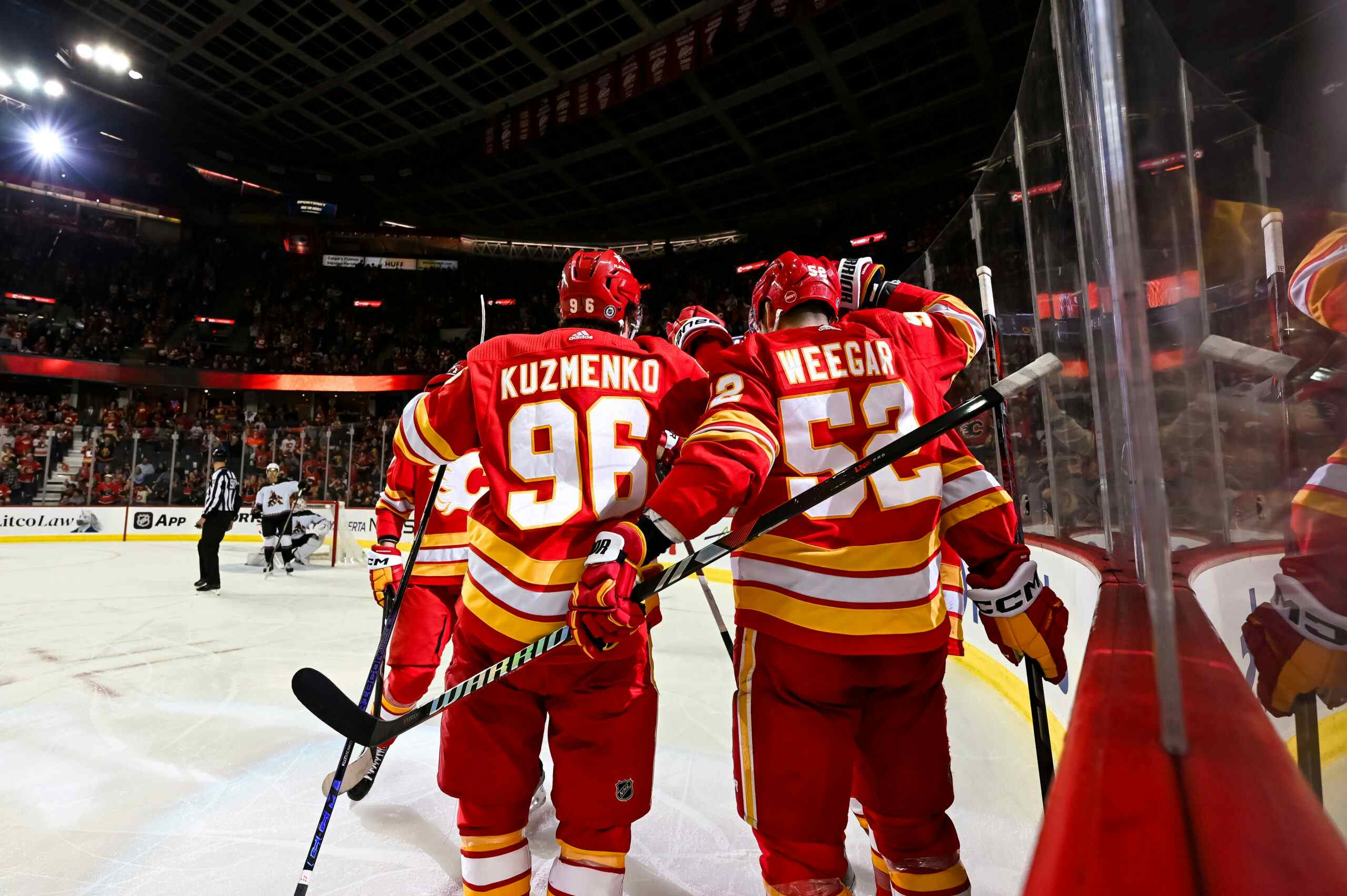The Calgary Flames’ special teams were a work in progress in 2023-24

By Ryan Pike
2 months agoBe sure to check out the latest NHL playoff odds with online sportsbook Betway.
The Calgary Flames had a weird season in 2023-24, and there’s no better illustration of that weirdness than their special teams play.
The club swapped out most of their coaching staff from the prior summer, with assistant coach Ryan Huska moving on from running the penalty kill to running the entire bench, while Marc Savard and Dan Lambert joined the coaching staff as assistants running the power play and PK respectively.
So how did things unfold on special teams this season? They were kind of all over the place, with the trade deadline representing a turning point (both positive and negative) for the two sides of the coin.
Power play
Savard inherited the power play from Kirk Muller. While Savard entered the picture with a good amount of renown from his previous work with the St. Louis Blues – and the Ontario Hockey League’s Windsor Spitfires – things didn’t really click for his power play units until the very end of the season.
The Flames’ first unit began the season with Nazem Kadri, Jonathan Huberdeau, Matt Coronato, Elias Lindholm and Rasmus Andersson. Yegor Sharangovich got a spot later on after Coronato was sent to the AHL. After Lindholm was traded to Vancouver, Andrei Kuzmenko moved in, while the defensive spot eventually rotated to MacKenzie Weegar. (The second unit involved a lot of different players, which we’ll call Mikael Backlund and Friends.)
“We weren’t able to find the consistency that we needed in it, and until recently, with a couple adjustments, it didn’t have the confidence knowing that we could be the difference in the hockey game,” reflected Huska during exit meetings with the media following the regular season. “So it hopped over the boards almost, it gave a coach the feeling like they’re going out there for two minutes and we’ll see what happens, we’ve gotta get back at it five-on-five. Where the difference towards the end of the year, they went over knowing they were going to score, and that mentality is something that we really have to push and have them focus on when we come back next year because it looked like a totally different power play the last 14, 15 games of the year than what we saw for the majority of the rest of the season.”
Kuzmenko’s arrival before the trade deadline – and his recovery from an early illness and subsequent injury – were the turning point for the PP, though Huska also noted they swapped the side Sharangovich was playing on as well. Prior to the trade deadline, the power play scored on 14.4% of advantages, 30th in the NHL. After the trade deadline, they scored on 29.3% of advantages, 3rd in the NHL.

Penalty kill
While the power play started off cold and got hot later in the year, the opposite was true for the penalty kill. Lambert inherited a pretty effective PK from Huska, and most of the personnel from the prior season that made it so effective. By the end of the season, well, the personnel had changed and the PK wasn’t nearly as good.
The first unit was usually Backlund, Lindholm, Noah Hanifin and Chris Tanev. The second unit was usually Blake Coleman, Sharangovich, Weegar and Andersson. But… Lindholm, Hanifin and Tanev were all traded mid-season. Kevin Rooney worked his way onto the top unit and was pretty useful, but the departures of Hanifin and Tanev led to a revolving door of blueliners on the second unit, usually involving Brayden Pachal and whoever else was on the third pairing that game. Changing out that many key players caused some challenges down the stretch.
“I think a lot of that was personnel,” said Huska. “You take your normal two penalty killers out of the picture and now you’re working with other guys, and they’re having to do some heavy lifting that other players were doing. So I think it came down moreso to that than anything structurally.”
Remember how the trade deadline was the turning point for the power play? Well, it was the opposite for the PK.
In 62 games before the deadline, the PK killed 83.6% of opposition PPs, 4th in the NHL. After the deadline, they killed off 71.% of opposition PPs, 29th in the NHL. Overall, they were 9th in the NHL, killing off 80.8% of opposition advantages.
Recent articles from Ryan Pike





